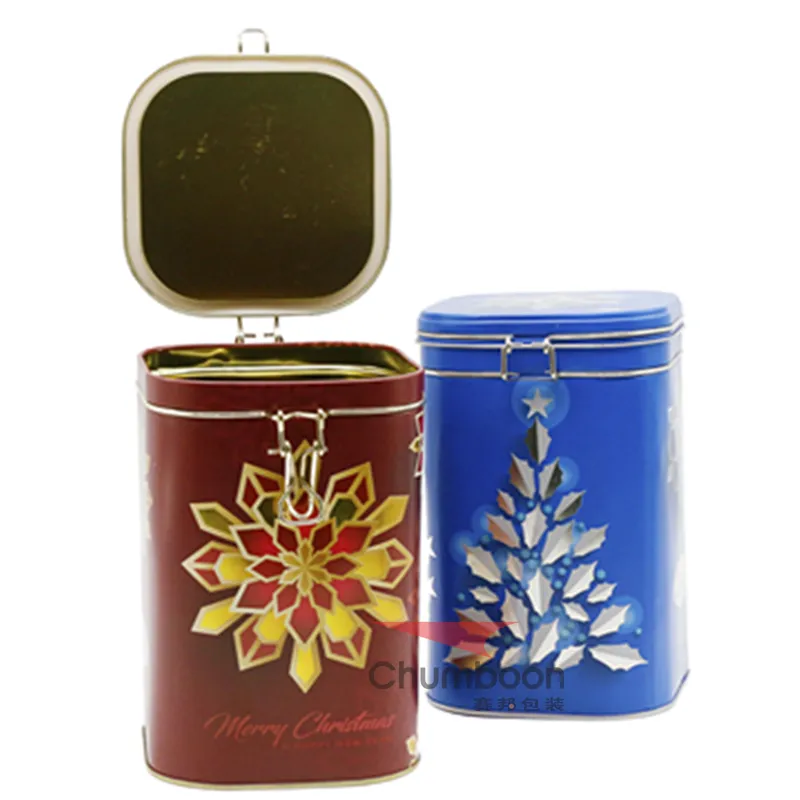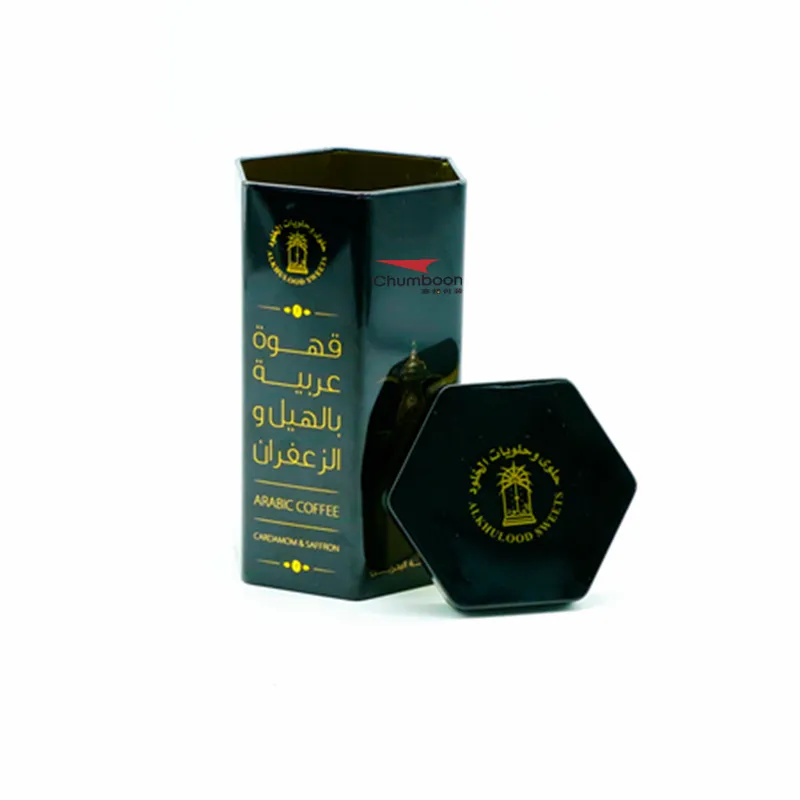With the improvement of environmental awareness and people's concern about food safety, tin boxes, as a classic food packaging container, have regained people's favor. However, the question of whether tin boxes are safe to store food has always been a concern for consumers.
This article will discuss in detail the material properties, food safety, common misunderstandings and precautions of tin boxes, to help consumers have a more comprehensive understanding of the application of tin boxes in food storage.

What is a tin box?
As the name suggests, a tin box is a packaging container made of tin. In fact, the main material of a tin box is not pure tin, but tin-plated iron, that is, a layer of tin is plated on the surface of an iron plate. This material is commonly called tinplate and has the following excellent properties:
1. Anti-corrosion performance: Tin-plated iron is plated with a layer of tin on the surface of the iron plate. This layer of tin can effectively prevent the iron plate from contacting with oxygen and moisture in the air, and prevent rust and corrosion.
2. Excellent sealing: The tin box has excellent sealing performance through strict crimping or welding processes, which can effectively isolate air and moisture and prevent the contents from deteriorating.
3. Good mechanical strength: Tin boxes have high mechanical strength and can withstand certain external pressure and impact to protect the food inside from damage.
4. Easy to process and decorate: Tin-plated iron has good processing performance and can be made into various shapes and sizes according to different needs. In addition, the surface of the tin box is easy to print and paint, and can be decorated in a variety of ways to enhance the beauty of the product.

Is it safe to hold food in tin boxes?
To discuss the safety of holding food in tin boxes, it is necessary to analyze from aspects such as material safety, processing technology and usage specifications.
1. Material safety
Tin is a metal element that is relatively stable at room temperature and is not easy to react with ingredients in food. Tin-plated iron forms a protective layer by plating a layer of tin on the surface of the iron plate to prevent the iron plate from direct contact with food, reducing the risk of rust contamination.
In addition, the application of tin boxes in food packaging has a long history and is widely used in food cans, candy boxes, tea cans and other fields. Authoritative organizations such as the U.S. Food and Drug Administration (FDA) and the European Food Safety Authority (EFSA) have strictly regulated and certified the food contact materials of tin boxes to ensure that they meet food safety standards.
2. Processing technology
The production process of tin boxes includes shearing, forming, welding, crimping and surface treatment. To ensure food safety, tin boxes need to follow strict hygiene standards and quality control measures during processing. Especially in the welding and crimping process, it is necessary to ensure the sealing performance of the tin box and the absence of residual harmful substances on the surface.
In addition, to prevent the inner wall of the tin box from reacting with acidic or alkaline foods, a layer of food-grade paint is usually applied to the inner wall of the tin box. This layer of paint not only improves the corrosion resistance of the tin box, but also prevents metal ions from migrating into food, thereby ensuring food safety.
3. Usage Specifications
Although tin boxes have good anti-corrosion properties and sealing properties, the following points should still be noted during use:
● Avoid storing highly acidic or highly alkaline foods: Although the inner wall of the tin box is usually protected by a protective paint, highly acidic or highly alkaline foods may still corrode the tin layer or protective paint, affecting food safety. Therefore, it is recommended to avoid storing such foods for a long time.
● Check the status of the tin box regularly: Before using the tin box, carefully check whether its surface is damaged or rusted. If the coating on the inner wall of the tin box is found to be peeling off or the iron plate is exposed, a new tin box should be replaced in time to prevent food contamination.
● Avoid heating food with a tin box: Tin boxes are mainly used for food storage and transportation, and should not be used directly for heating food. High temperatures may cause the tin layer or protective paint to decompose and produce harmful substances.

Common misunderstandings and clarifications
Will tin boxes release harmful metals?
Many people worry that tin boxes will release harmful metals and contaminate food. In fact, tin is relatively stable at room temperature, and tin-plated iron has undergone strict processing and testing and meets the safety standards for food contact materials. As long as the correct operating specifications are followed during use, tin boxes will not affect food safety.
Is the tin box easy to rust?
Tin-plated iron has a layer of tin on the surface of the iron plate, which has good anti-corrosion properties. As long as the surface of the tin box is intact, the inside will not rust. But if the tin layer is damaged and the iron plate is exposed to the air, it may rust. Therefore, during use, avoid scratching or hitting the tin box to keep its surface intact.
Is the tin box not suitable for long-term food storage?
The tin box has excellent sealing and anti-corrosion properties and is an ideal choice for long-term food storage. Many food cans and tea cans are packaged in tin boxes, which can effectively extend the shelf life of food. As long as the tin box is kept dry and clean during storage and highly acidic or highly alkaline foods are avoided, the tin box is completely suitable for long-term food storage.
Application of tin boxes in different foods
1. Tea
Tin boxes are often used to store tea because of their good moisture-proof and sealing properties. Tea is easy to absorb moisture and odor, and tin boxes can effectively isolate air and moisture to maintain the aroma and taste of tea.
2. Candy and biscuits
Tin boxes are often used to package candy and biscuits. Their sealing properties can prevent food from getting damp and softening, and maintain their crisp taste. At the same time, the sturdy shell of the tin box can protect candy and biscuits from external pressure and prevent them from breaking.
3. Dried fruits and nuts
Dried fruits and nuts require a moisture-proof and insect-proof storage environment, and the sealing properties of tin boxes can meet these requirements. Using tin boxes to store dried fruits and nuts can effectively extend their shelf life and maintain their original flavor and nutrition.
4. Canned food
Canned food is a typical representative of tin box applications. The sealing and anti-corrosion properties of tin boxes make them an ideal packaging container for canned food, which can effectively isolate air and light and prevent food from spoiling.

Precautions for using tin boxes
Although tin boxes have excellent storage properties, you still need to pay attention to the following matters during use to ensure the safety of food:
1. Clean the tin box regularly
Before and after use, the tin box should be cleaned regularly to ensure that its interior is dry and hygienic. It can be cleaned with warm water and neutral detergent, and avoid using acidic or alkaline detergents.
2. Avoid high temperature and direct sunlight
Tin boxes should be stored in a cool and dry place, avoiding direct sunlight and high temperature environment. High temperature may cause the protective paint on the inner wall of the tin box to decompose, affecting food safety.
3. Pay attention to the acidity and alkalinity of food
When using tin boxes to store food, highly acidic or highly alkaline foods should be avoided. Such foods may corrode the tin layer or protective paint, affecting the safety of food and the service life of the tin box.
4. Replace damaged tin boxes in time
During use, if scratches, damage or rust are found on the surface of the tin box, a new tin box should be replaced in time. A damaged tin box may not provide effective protection and cause food contamination.

